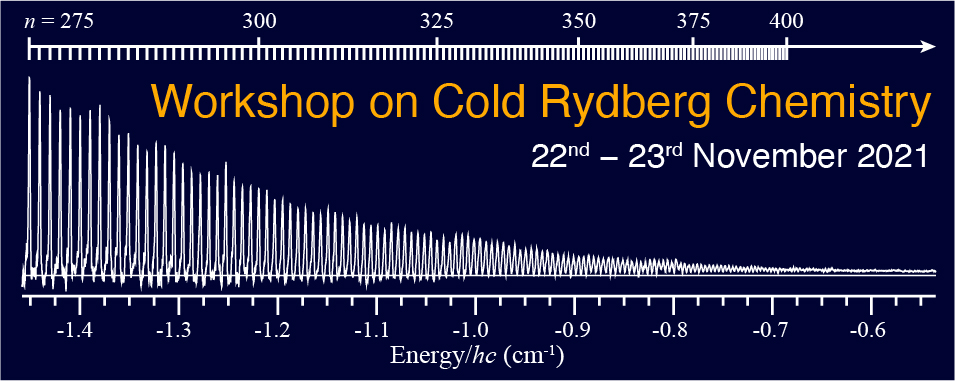Speaker
Description
High Rydberg states of small molecules play an important role in electron-ion recombination in laboratory, atmospheric, and astrophysical plasmas [1-3]. However, until recently laboratory studies of the slow decay dynamics of molecules in these excited states have not been possible [4,5]. Here we describe a unique, state-of-the-art cryogenically cooled chip-based Rydberg-Stark decelerator, and the use of this device to electrostatically trap nitric oxide ($\mathrm{NO}$) molecules for the first time [6]. Trapping the molecules, prepared in long-lived Rydberg states using resonance-enhanced two-colour two-photon excitation from the $\mathrm{X} \, ^2Π_{1/2}$ ground state, for up to 1 ms enabled precise measurements of excited state decay rates [6,7]. These measurements were performed for molecules photoexcited to Rydberg states with principal quantum numbers, $n$, between $32$ and $50$, in Rydberg series converging to the $N^+ = 0$, $1$, and $2$ rotational states of the $v^+ = 0$ vibrational state of $\mathrm{NO^+}$. For the range of Rydberg states studied, decay time constants between $200 \, \mathrm{\mu s}$ and $400 \, \mathrm{\mu s}$ were observed to generally decrease as the value of n was increased. However, for some particular values of n deviations from this trend were seen. Therefore the long-lived states studied in these experiments did not follow the typical n-scaling rules of high Rydberg states. With the aid of numerical calculations of the energy-level structure and lifetimes of the Rydberg states, these observations were interpreted to arise as a result of weak rotational and vibrational channel interactions. The vibrational channel interactions, between Rydberg states in the $v^+ = 0$ vibrational series and nearby short-lived ($\sim 1 \, \mathrm{ps}$) low-$n$ ($n=7$) states in the $v^+ = 1$ series, resulted in contributions to the total excited-state decay rates of $\sim 1 \, \mathrm{kHz}$. Rotational channel interactions, within the $v^+ = 0$ series, were identified to specifically affect the decay time constants of some individual Rydberg states.
[1] A. Giusti, J. Phys. B, 1980, 13, 3867
[2] S. Guberman, J. Phys. Chem. A, 2007, 111, 11254
[3] R. Wang, M. Aghigh, K. L. Marroquín, K. M. Grant, F. B. V. Martins, J. S. Keller, E. R. Grant, Phys. Rev. A, 2020, 102, 063122
[4] S. D. Hogan, Ch. Seiler, F. Merkt, Phys. Rev. Lett., 2009, 103, 123001
[5] Ch. Seiler, S. D. Hogan, F. Merkt, Phys. Chem. Chem. Phys., 2011, 13, 19000
[6] A. Deller, M. H. Rayment, S. D. Hogan, Phys. Rev. Lett., 2020, 125, 073201
[7] M. H. Rayment, S. D. Hogan, Phys. Chem. Chem. Phys., 2021, 23, 18806

